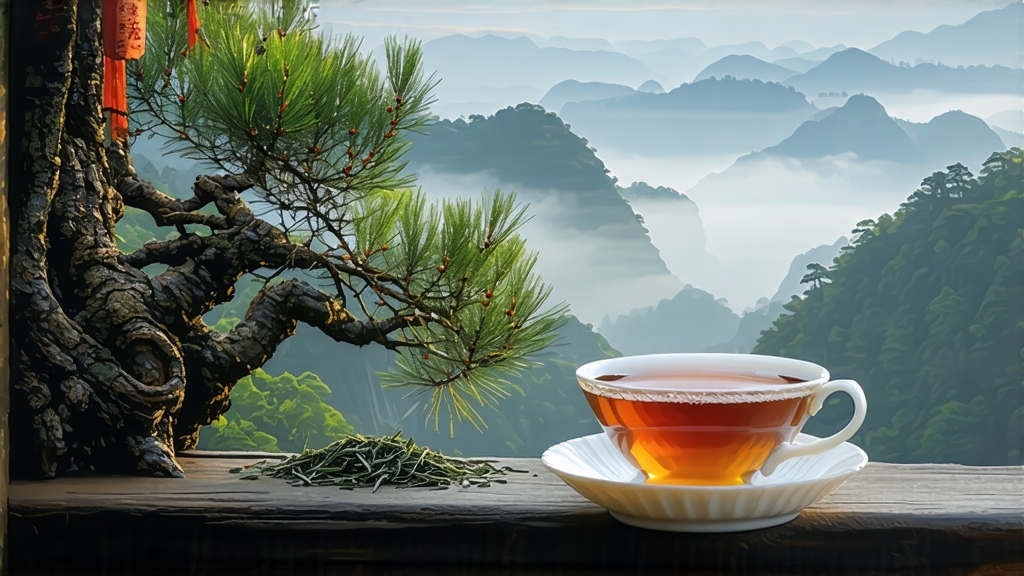
Ask most tea lovers to name China’s gift to the globe and they will answer “black tea.” Yet few realize that the very first black tea ever created still survives in the mist-wrapped gorges of northern Fujian, where it is called Zheng Shan Xiao Zhong—known abroad as Lapsang Souchong. Born in the mid-seventeenth century, this smoky ancestor predates every Assam, Ceylon and Keemun; its original leaves were the cargo that triggered the Boston Tea Party and financed the East India Company’s dreams. Today, after four centuries of war, trade bans and fashion swings, Lapsang remains the benchmark against which all later black teas are measured, and the only one whose aroma still carries the scent of pine forests burned at midnight.
History: from Ming dynasty border tax to London drawing rooms
Legend places the birth of Lapsang in 1646, when Qing troops pressed southward through the Wuyi Shan. Villagers in Tongmu, pressed for time, dried freshly picked leaves over open pinewood fires to prevent spoilage. The accidental smoke infusion proved irresistible to the Dutch traders waiting at Xiamen port; within decades “bohea” (the Fujianese pronunciation of “Wuyi”) became Europe’s costliest luxury, priced higher than silver. By 1700 the London Gazette advertised “Souchong, the finest sort of bohea,” and Queen Anne pronounced it the only tea worth drinking with milk. The East India Company monopolized shipments until 1833, after which British planters smuggled seeds to Assam and Ceylon, forever changing world tea geography yet never quite replicating the original pine-kissed cup.
Terroir: why only 120 km² can create the true taste
Authentic Zheng Shan Xiao Zhong is protected by Chinese national-origin legislation; the demarcated zone covers barely twelve thousand hectares on the western flank of the Wuyi Mountains, 800–1,500 m above sea level. Here a subtropical monsoon climate collides with mineral-rich granite soils, morning fog and a diurnal swing of 15 °C. Indigenous Xiaoyezhong (small-leaf) tea trees, some over a hundred years old, root directly into rock fissures, absorbing quartz and potassium that translate into a natural sweetness no amount of skill can counterfeit outside the gorge. Within Tongmu village alone, micro-valleys such as Guadun, Miaowan and Jiangqiao yield leaf lots that fetch prices rivaling first-flush Darjeeling, so distinct are their soil signatures.
Two families, two styles: traditional smoke vs. unsmoked “new craft”
International markets usually meet only the smoky version, yet connoisseurs now distinguish two lineages. Traditional Xiao Zhong is withered over local Masson pine fires, rolled, oxidized 80–90 %, then re-smoked in bamboo baskets above a low resinous ember for six to eight hours. The result is a glossy black strip with golden tips, releasing aromas of longan, dried lychee and campfire. Since 2005 an “unsmoked” or “original aroma” variant has emerged, aimed at discerning Chinese drinkers who prize the honey-like Wuyi mineral note without tar. Its withering uses gentle warm air, oxidation is arrested earlier, and the leaf is baked over charcoal derived from local hardwoods. Both styles share a cacao-sweet finish, but the former pairs with dark chocolate and cigars, the latter with apricot pastries and fresh goat cheese.
Craft: an overnight choreography of fire, wind and muscle
Harvest begins in late April, when two leaves and a bud remain tender yet contain the highest ratio of polyphenols to green astringency. Leaves are laid on bamboo mats suspended in the second story of three-hundred-year-old wooden houses; downstairs, pinewood logs smoulder at 40 °C, sending wisps through floor cracks. For twelve hours the tea master alternates between rolling the mats and shifting the fire, judging moisture by hand feel alone. Once the leaf is velvet-soft, it is bruised in a cast-iron pan for precise oxidation that turns the edges copper within forty minutes. The critical smoking follows: baskets are stacked seven layers high, each rotated every twenty minutes so that no leaf overdoses on resin. A single mis-timed stoke can tip the balance from fragrant to acrid, so the master sleeps in